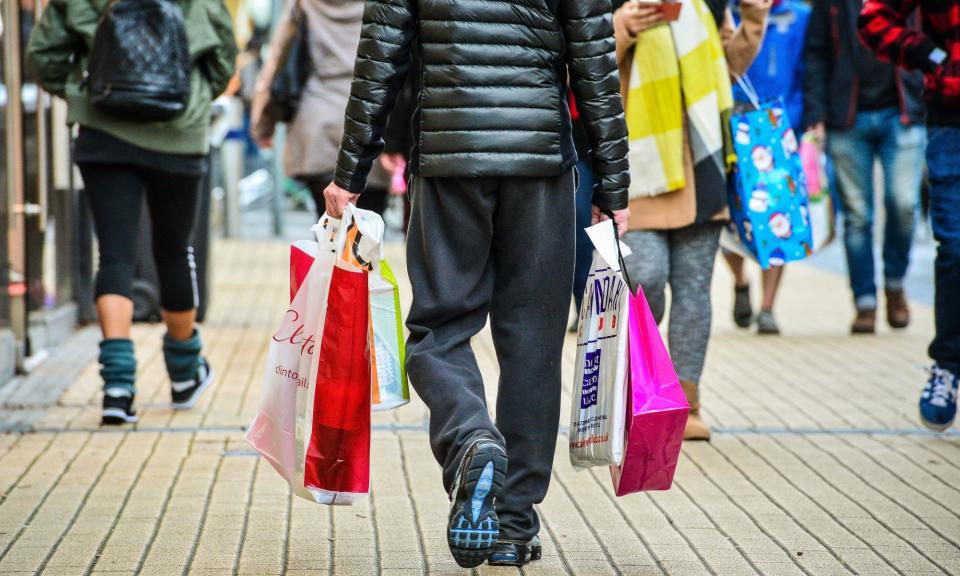Inflation in UK shops slows amid price cuts on clothes and shoes

Prices in UK shops rose at their slowest rate since late 2021 in April as deep discounts by clothing and footwear retailers put the brakes on inflation, the latest snapshot of high street spending trends has shown.
The monthly bulletin from the British Retail Consortium (BRC) – the lobby group for the industry – found that the battle by store owners to offload summer stock in cold and wet weather meant prices in non-food stores were lower this month than a year earlier.
The BRC said the cost of non-food goods fell at an annual rate of 0.6% in April, while the price of food increased by 3.4%, down from 3.7% in March. Taken together, food and non-food inflation stood at 0.8% in April, compared to 1.3% in the year to March – the lowest level since December 2021.
Related: Ocado pay backlash looms as firm moves to offer boss £14.8m package
Data for the BRC’s shop price bulletin was collected early in the month and points to another fall in the official inflation figure for April when it is released next month.
Inflation peaked at 11.1% in October 2022 – the highest level in four decades – but has since been on a downward trend. In the year to March, the Office for National Statistics said prices rose by 3.2%, but the Bank of England expects lower energy bills to bring the annual inflation rate down to about 2% in April.
Despite the easing of cost-of-living pressures, food prices are 25% higher than they were when Russia invaded Ukraine just over two years ago, while prices overall have increased by 14%.
Helen Dickinson, the BRC chief executive, said shop price inflation levels were showing signs of normalising.
She added: “Both food and non-food have seen shop inflation rates ease to more manageable levels. In April, non-food prices fell, especially in clothing and footwear, where retailers ramped up promotions to encourage consumer spend.
“Food inflation slowed for the 12th consecutive month as fresh products, such as butter, fish and fruits, continued to fall in price due to easing input costs and intense competition between grocers.”
Amid warnings from farmers that months of wet weather could lead to food shortages and higher prices, Dickinson said geo-political tension also posed a threat to price stability.
“Retailers will continue to do all they can to keep prices down, but government has a role to play with pro-growth policies that allow businesses to invest in the customer offer,” she added.

 Yahoo Finance
Yahoo Finance 